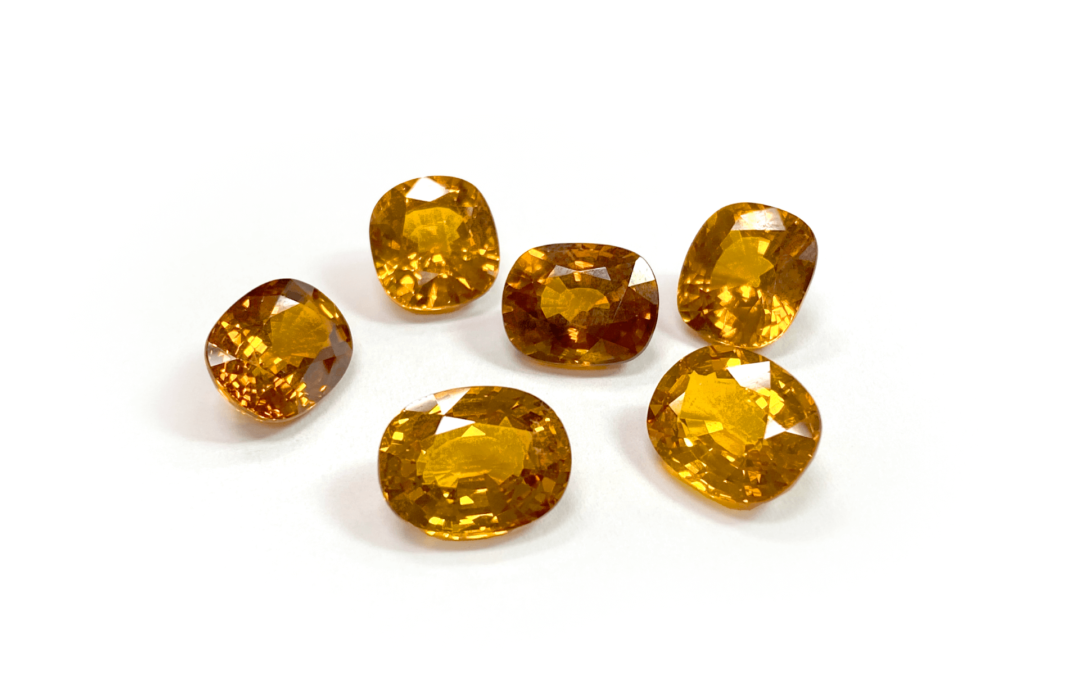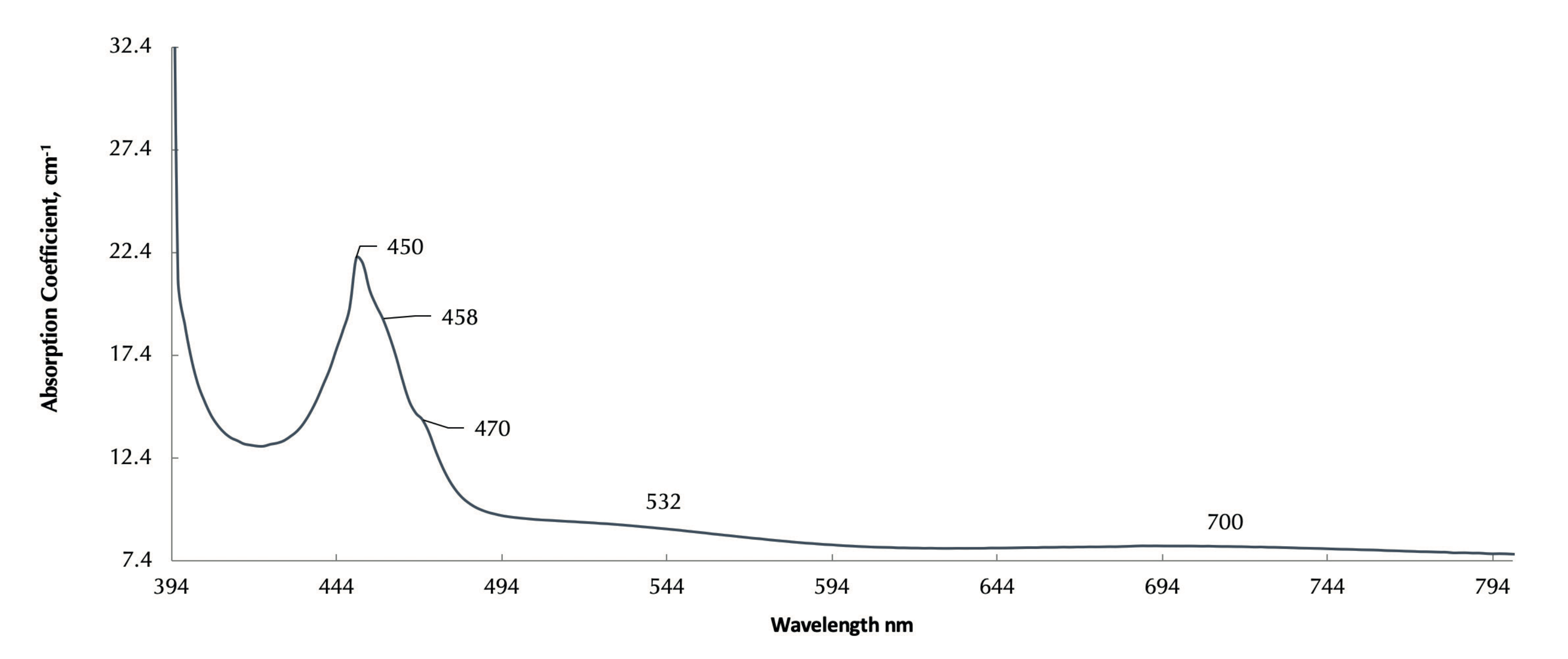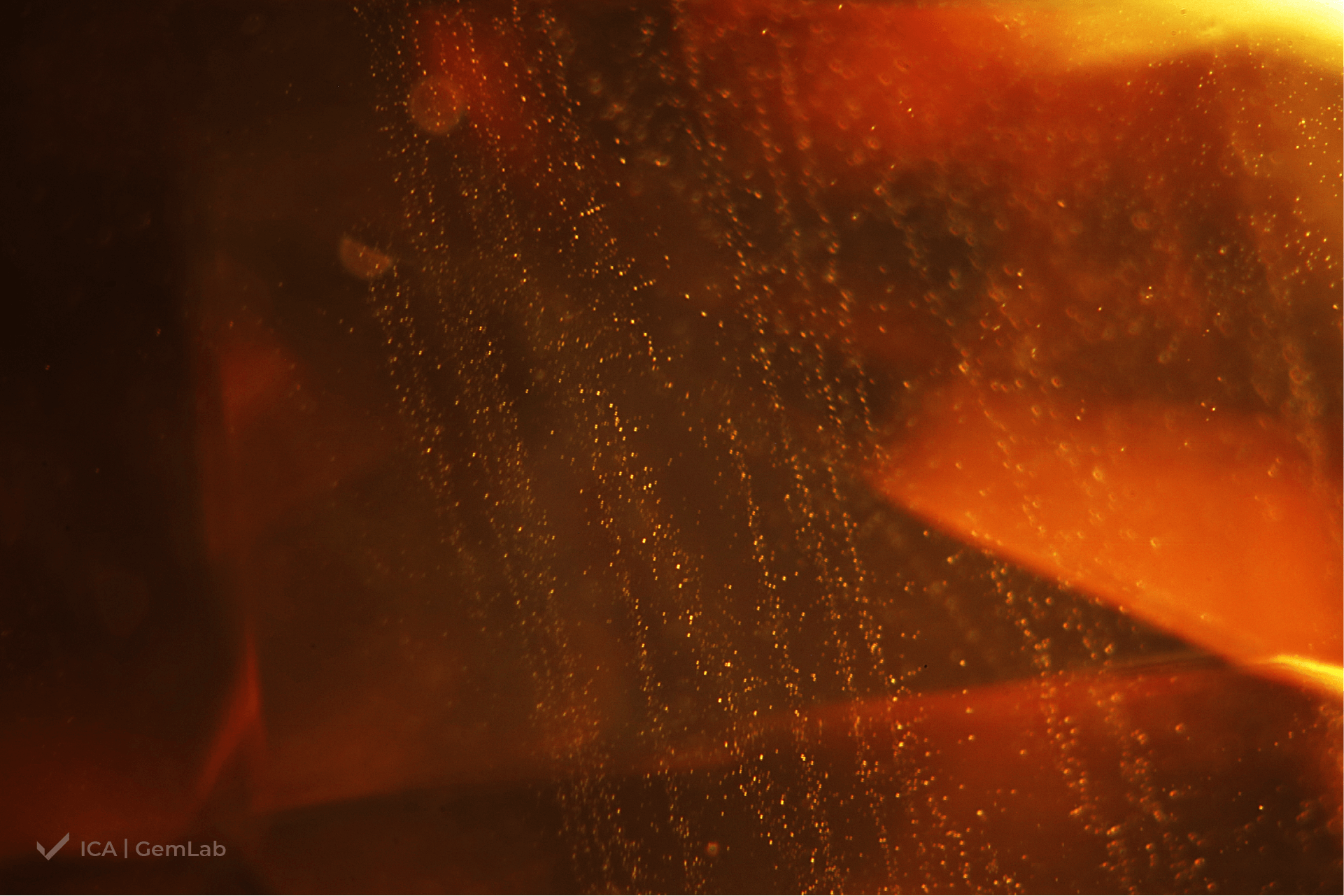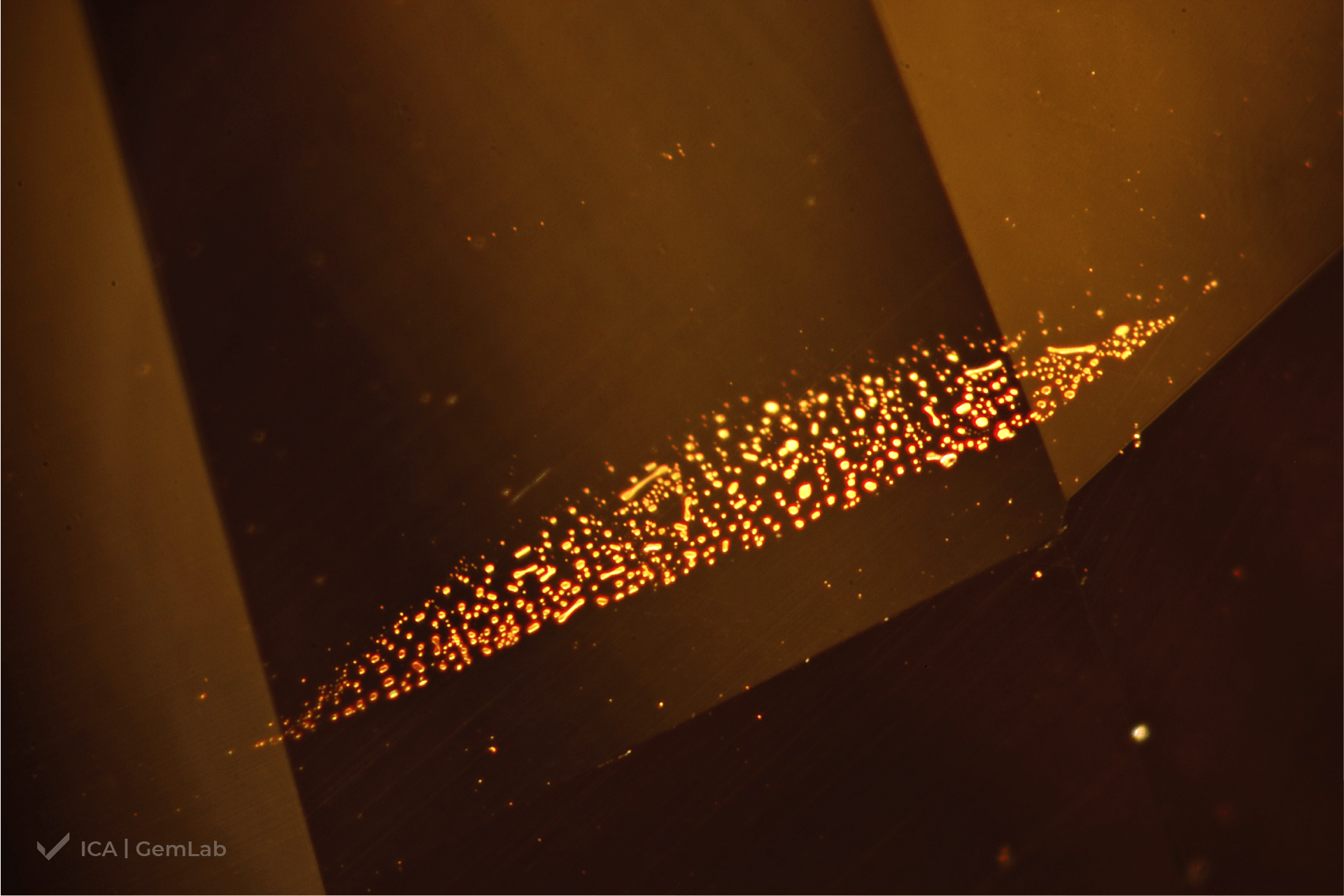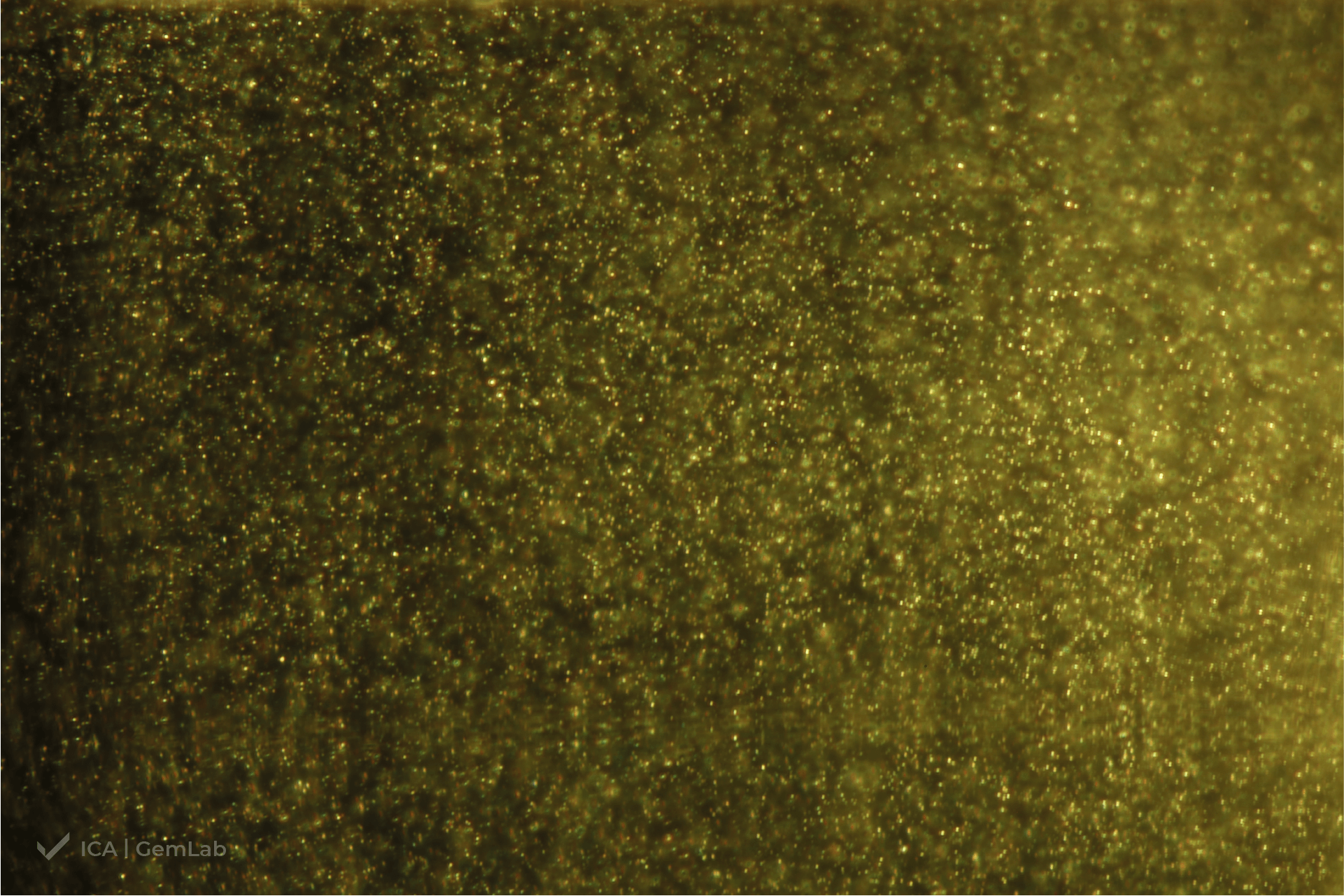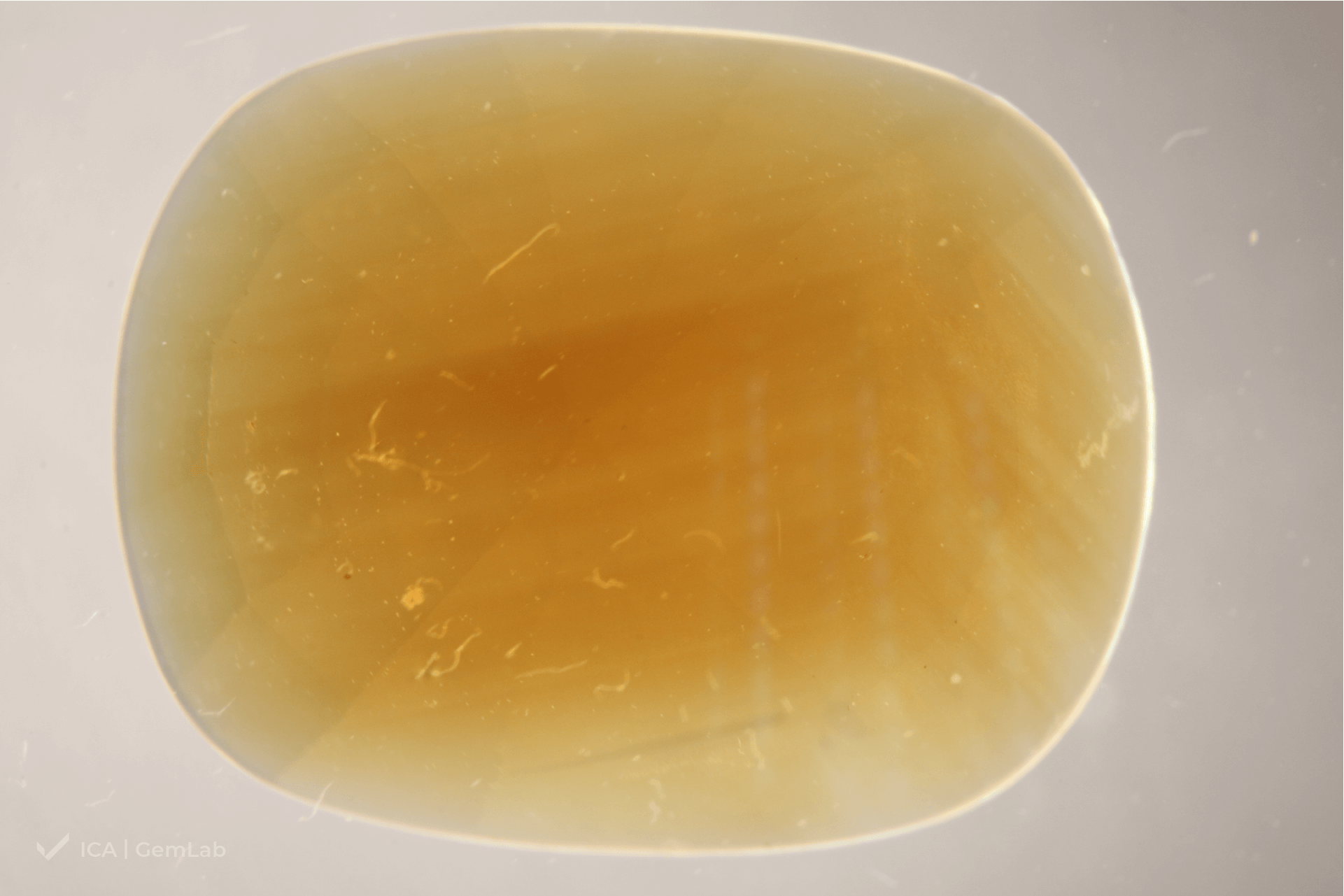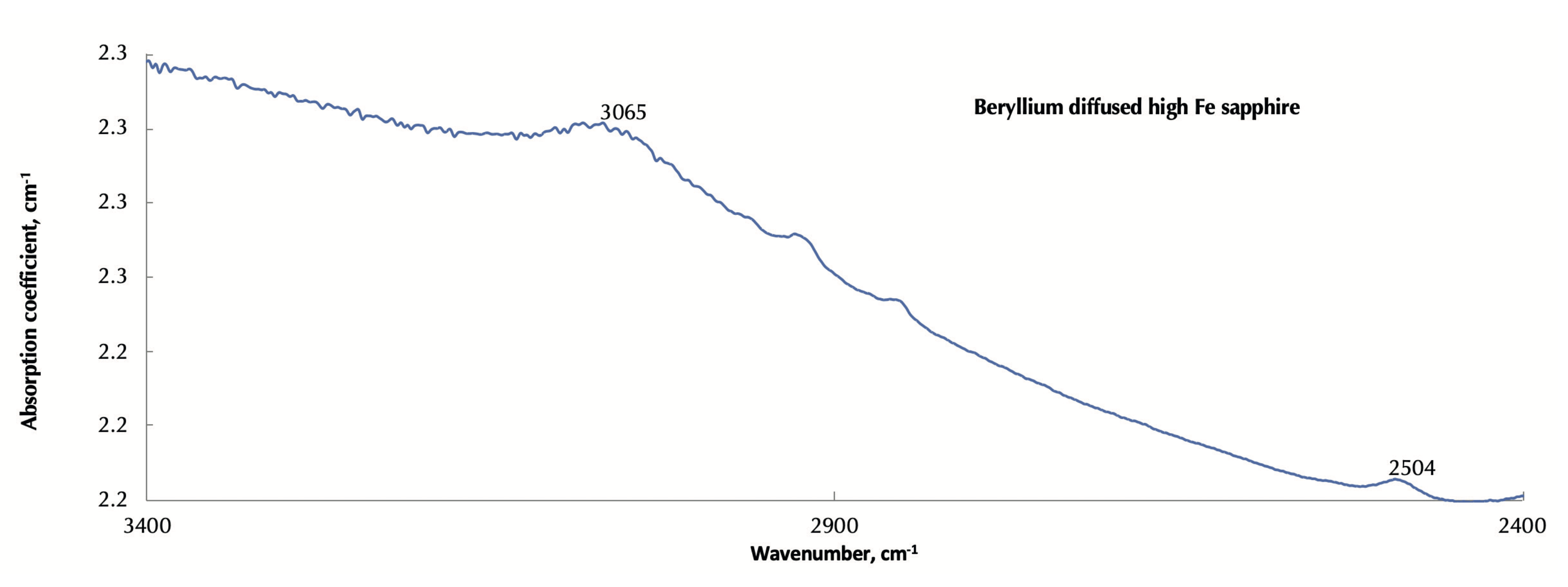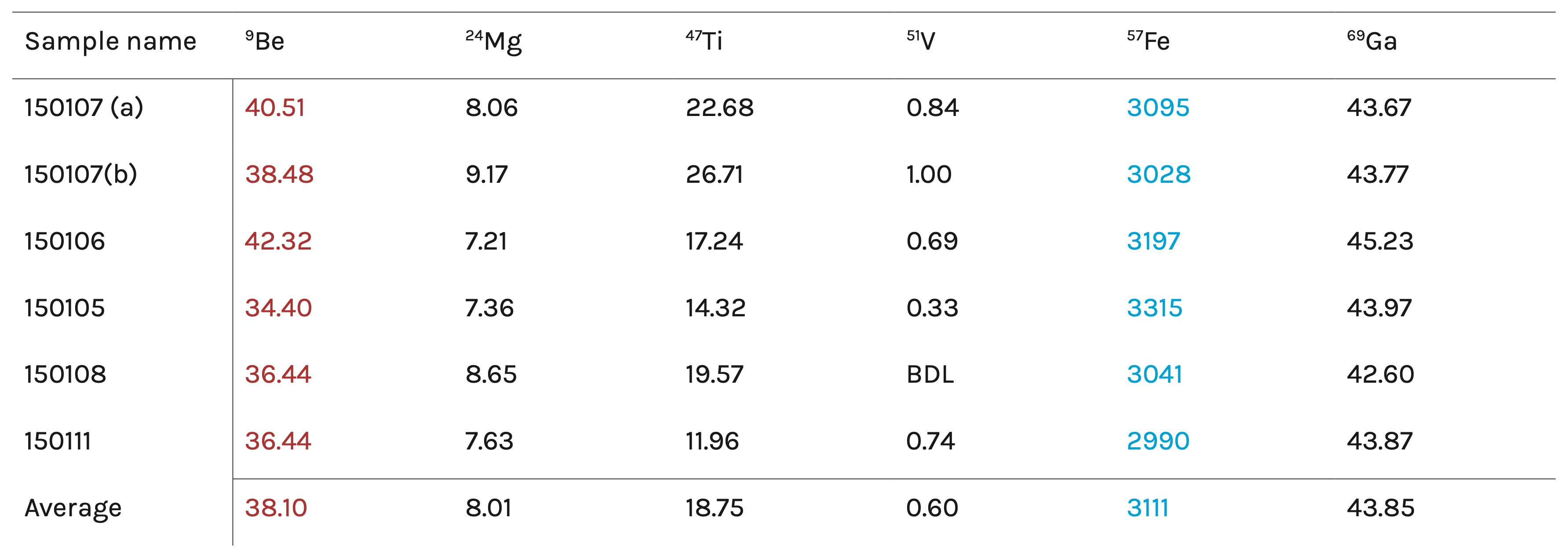Figure 1
The six beryllium diffused, high Fe, yellow sapphires described in this report.
Step into the captivating world of gemstones, where hidden secrets and fascinating discoveries await!
Gemstone enthusiasts and traders were caught off guard when the AGTA Gemological Testing Center in New York issued a warning in 2002 about the emergence of beryllium-diffused rubies and sapphires on the market. A new chapter in gemstone treatments emerged as beryllium diffusion took center stage. This innovative method carried out at high temperatures using a flux, resulted in significant visual transformations of rubies and sapphires. This treatment leads to significant changes in the color and properties of the stones, making it difficult for gemologists to identify them.
A significant number of rubies and sapphires flooding the international gem markets had undergone a new treatment method involving the deliberate diffusion of Beryllium into the gemstone lattice. This revelation sparked extensive experimentation, discussions, and debates within the corundum world.
Even after 21 years, a significant volume of these treated rubies and sapphires remains in the market. Recently, a set of 6 intense and evenly colored yellow sapphires were submitted for identification and origin determination at ICA | GemLab.
Let’s take a closer look at the work process of detecting Beryllium within these intense yellow sapphires –
Additionally, the sapphires displayed typical inclusions associated with heat treatment, such as fine particle clouds and heat-altered feathers. Further examination unveiled color zoning patterns instead of the expected even spread of golden yellow.
Gemologists turned to infrared spectroscopy to delve deeper into the nature of these treated sapphires. The normal practice with sapphire examinations, the infrared spectra were recorded for each of these stones. Interestingly two broad but shallow peaks were recorded at 3065 and 2504 cm-1 in four out of the 6 stones (Figure 9). A read of the literature finds a paper by Balmer and Krzemnicki (Balmer, 2015) where they report on an experiment in beryllium diffusion where two similarly positioned broad peaks were induced (a band at 3053 and a less pronounced band at 2490 cm-1) in specimens. The exact relationship between these peaks and beryllium diffusion remains a subject of ongoing research, intriguing gemologists to explore further.
Figure 2
The recorded UV/visible spectrum of a beryllium diffused sapphire revealing a strong absorbency at 450 nm (the 450 complex 450, 458 and 470 attributed to Fe3+–Fe3+ pairs
(J. Emmett, Dubinsky, E, V., 2017).
The use of cutting-edge technology allowed gemologists to measure elemental compositions quantitatively. Trace element analyses using LA-ICP-MS were performed on the yellow sapphires to gain deeper insights. Results revealed a notable presence of iron (Fe) and, significantly, an average beryllium (Be) content of 38.1 parts per million (ppm) within the stones, unrelated to tantalum (Ta), niobium (Nb), or tungsten (W). This analysis confirmed the artificial diffusion of Beryllium into the sapphires, confirming suspicions and highlighting the need for continued vigilance in the gemstone trade.
The journey into beryllium diffusion in sapphires has shed light on a captivating phenomenon that has intrigued gemologists for over two decades. With ongoing research and technological advancements, gemologists and traders can navigate the market with heightened awareness and understanding of the different types of treatment in their Gemstones.
As such, traders need to be extra vigilant when making purchases to ensure they do not unknowingly acquire treated stones.
Figure 5
“Strings” of fine dust-like inclusions within a beryllium diffused yellow sapphire recently examined at ICA | GemLab.
Figure 3
Cloud of fine dust-like inclusions within a beryllium diffused yellow sapphire recently examined at ICA | GemLab.
Figure 7
Angular color zoning within a beryllium diffused yellow sapphire, seen while immersed in methylene iodide, recently examined at ICA | GemLab.
Table 1
The trace element chemistry, in ppma (parts per million atomic), for the six beryllium diffusion treated yellow sapphires. Beryllium was recorded in all of the samples and averaged 38.1 ppma and was de- termined as being of an unnatural origin by virtue of the lack of association with Ta, Nb, or W (Pardieu, 2013). Note that the Fe content averages 3,111 ppma for all samples. BDL = below detection limit.
About the Writer
About the Writer

Ken Scarrat
Scarratt is considered by many in the gem and jewelry industry media to be one of the leading pearl authorities in the world. He has extensive experience in researching and identifying a broad range of pearl materials and detecting treatments. His expertise in saltwater and freshwater natural pearls includes the rare Melo pearl. In 1999, Scarratt co-authored The Pearl & the Dragon – the definitive study of Oriental pearls.
As always, please find our sources below;
Anderson, B. W. (1959). Properties and classification of individual garnets. Jour- nal of Gemmology, 7(1), 1-5.
Campbell, I. C. C. (1972). A comparative study of Rhodesian rhodolite garnet in relation to other known data and a discussion in relation to a more acceptable name. Journal of Gemmology, 13(2), 53-64.
Campbell, I. C. C. (1973). A gemological report on rhodolite garnet, Malagasy. Lap- idary Journal, 27(6), 958-960.
Grew, E. S., Locock, A.J., Mills, S.J., GaluskIna, GaluskIn, Hålenius, U. (2013). Nomen- clature of the garnet supergroup. American Mineralogist, 98, 785–811.
Gübelin, E. J. (1973). Internal World of Gemstones (reprinted 1983 ed.). Zürich: ABC Verlag.
Gübelin, E. J., & Koivula, J. I. (1986). Photoatlas of Inclusions in Gemstones. Zürich, Switzerland: ABC Edition.
Gübelin, E. J., Koivula, J. I. (2005). Photoatlas of Inclusions in Gemstones (Vol. 2). Basel, Switzerland: Opinio.
Gübelin, E. J., Koivula, J. I. (2008). Photoatlas of Inclusions in Gemstones (Vol. 3). Basel, Switzerland: Opinio.
Hidden, W. E., & Pratt, J. H. (1898). On rhodolite, a new variety of garnet. American Journal of Science, 155(28), 294-296.
Hlaing, U. T., & Win, T. T. (1996). Mong Hsak rhodolite garnet. Australian Gemmol- ogist, 19(6), 270-272.
Kammerling, R. C., & Koivula, J. I. (1990). Star rhodolite garnet from Tanzania. Journal of Gemmology, 22(1), 16-18.
Koivula, J. I., & Kammerling, R. C. (1991). Rhodolite from Orissa. Gems and Gem- ology, 27(1), 50.
Martin, B. F. (1970). A study of rhodolite garnet. Journal of Gemmology, 12(2), 29- 36.
Sangsawong, S., Raynaud, V., Pardieu, V. (2016). Purple pyrope-almandine garnet from Mozambique. Gems & Gemology, LII(3), 321-323.
Sripoonjan, T., Maneekrajangsaeng, M., Jakkawanvibul , J., Leelawatanasuk, T. (2016). A New “Purple Rhodolite” Garnet from Mozambique: Its Characteristics & Properties. Paper presented at the Conference: GIT2016 Pattaya, Thailand.
Sun, Z., Palke, A.C., Renfro, N. (2015). Vanadium and Chromium Bearing Pink Py- rope Garnet: Characterization and Quantative Colormetric Analysis. Gems & Gemology, 51(4), 348-368.
Webster, R. (1983). Gem their sources, descriptions and identification. 690-696.

